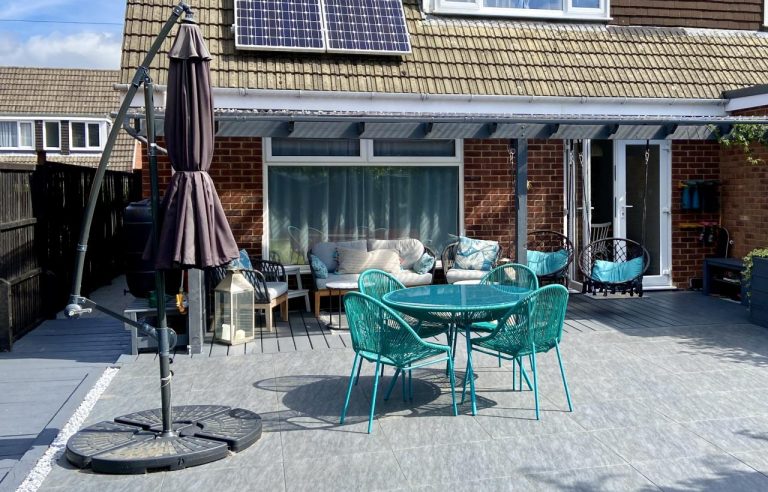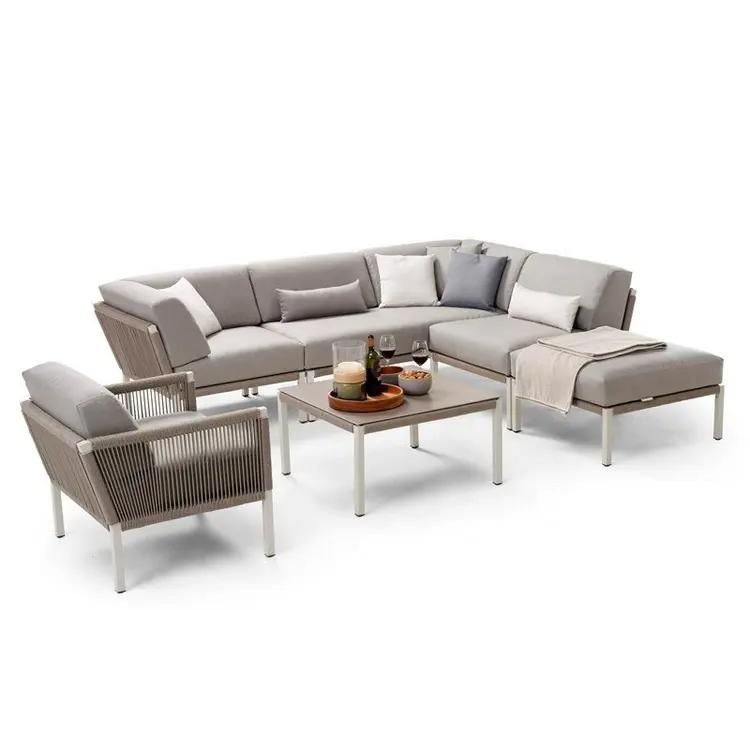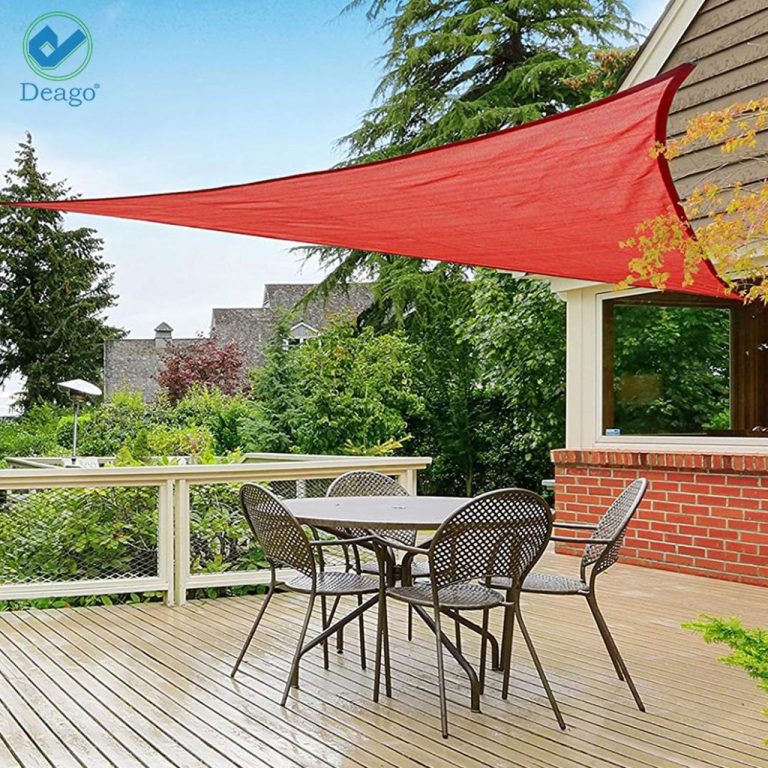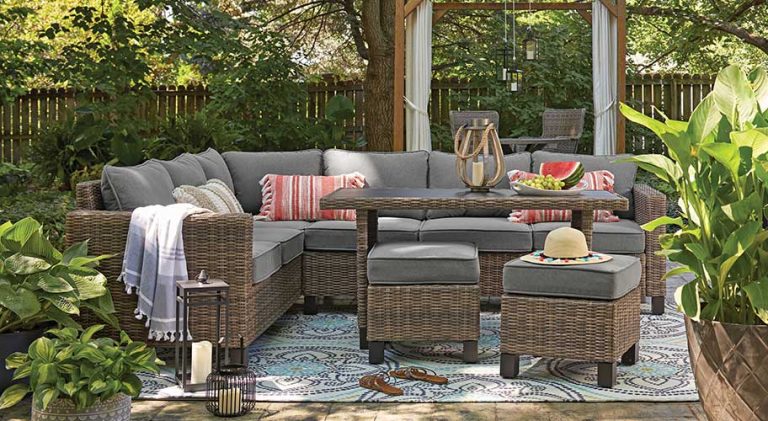Outdoor Patio Furniture Covers for Winter A Comprehensive Guide
Outdoor patio furniture covers for winter are essential for protecting your valuable investments from harsh weather. This guide delves into the crucial aspects of choosing and using these covers, ensuring your furniture remains in pristine condition throughout the colder months. We’ll explore various cover types, from waterproof fabrics to durable vinyl, and provide insights on selecting the right cover for your specific patio furniture and climate.
Preparing your patio furniture for winter involves more than just throwing a cover over it. Proper cleaning, drying, and storage are vital for extending its lifespan. We’ll detail the steps required for successful winterization, from measuring your furniture to choosing the best storage methods. This comprehensive guide offers practical advice and a comparison of different strategies, allowing you to make informed decisions.
Types of Covers

Choosing the right outdoor patio furniture cover for winter is crucial for protecting your investment and ensuring its longevity. Different materials and designs offer varying levels of protection and durability, impacting the overall cost and performance. Consider the specific climate and the expected duration of the winter season when selecting a cover.
Different Cover Types
Various types of covers cater to diverse needs and budgets. Understanding the strengths and weaknesses of each material is essential in making an informed decision.
- Waterproof Fabrics: These covers are typically made from polyester or nylon, treated with water-resistant coatings. They are often a good balance between cost and performance. Pros include relatively affordable prices and good weather resistance for moderate winter conditions. Cons include potential for leaks in heavy downpours or prolonged periods of extreme cold, as the coating may degrade over time. Examples include covers for lightweight patio sets or those in regions with mild winters.
- Canvas Covers: These covers are durable and often made from heavy-duty canvas materials. Canvas covers provide excellent protection against the elements, including wind and rain. Pros include long-lasting durability and robust weather resistance. Cons include a higher price point compared to waterproof fabrics and potential for mildew or mold growth if not properly maintained.
- Vinyl Covers: Vinyl covers are highly water-resistant and offer excellent protection from the elements. They’re known for their flexibility and durability, making them suitable for a wide range of outdoor furniture. Pros include excellent water resistance, durability, and often a longer lifespan. Cons include a higher price tag compared to waterproof fabrics, and some vinyl materials can become brittle in extreme cold, potentially cracking or tearing.
- Custom-Fit Covers: These covers are specifically designed to fit particular patio furniture styles. They often provide superior protection and a better aesthetic fit. Pros include precise fitting and superior protection. Cons include a higher price point compared to standard covers, and availability may be limited depending on the furniture type.
Comparison Table
| Cover Type | Material | Pros | Cons |
|---|---|---|---|
| Waterproof Fabrics | Polyester, Nylon (water-resistant coating) | Affordable, moderate weather resistance | Potential leaks in severe weather, limited durability |
| Canvas | Heavy-duty canvas | High durability, robust weather resistance | Higher price, potential for mildew/mold |
| Vinyl | Vinyl | Excellent water resistance, durability | Higher price, potential brittleness in extreme cold |
| Custom-Fit | Various (depending on design) | Superior fit, better protection | Higher price, limited availability |
Choosing the Right Cover: Outdoor Patio Furniture Covers For Winter
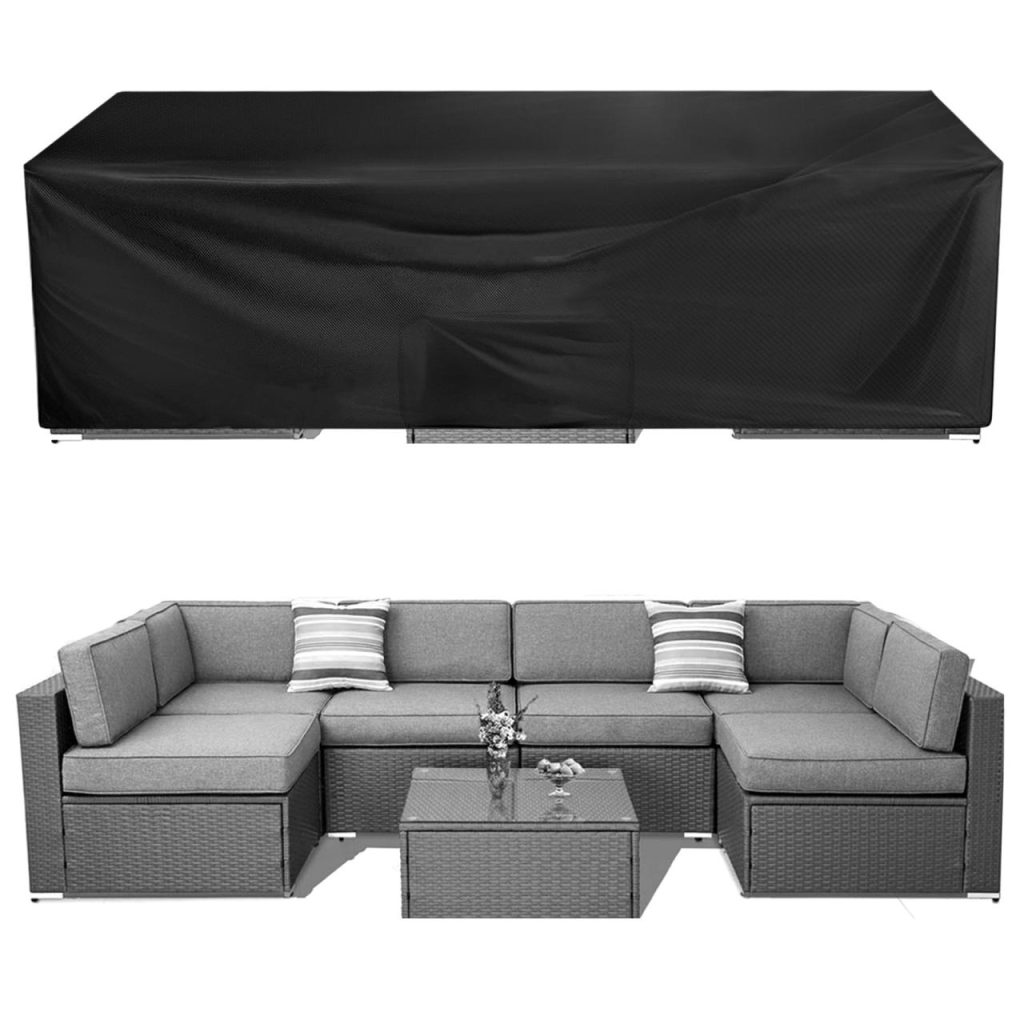
Source: walmartimages.com
Selecting the appropriate winter cover for your patio furniture is crucial for preserving its aesthetic appeal and longevity. Properly chosen covers shield furniture from harsh weather elements, extending its lifespan significantly. Careful consideration of various factors, from furniture type to climate conditions, ensures a protective and effective solution.
Choosing the right cover involves more than just aesthetics; it’s about practical protection against the elements. A well-fitted cover will shield your furniture from rain, snow, sleet, and damaging UV rays, preventing fading, warping, and the growth of mildew. This proactive approach minimizes costly repairs and replacements, ensuring your investment remains in pristine condition.
Factors to Consider
Selecting the right cover hinges on several key considerations. The type of furniture, the prevailing climate, and your budget all play vital roles in the decision-making process. These factors must be carefully evaluated to ensure optimal protection.
- Furniture Type: Different furniture materials require different cover types. Wicker, metal, and wood furniture each have unique characteristics that influence the choice of cover. A breathable cover is essential for wicker to prevent moisture buildup, while a heavy-duty cover is necessary for metal furniture to withstand strong winds and potential snow loads. Wood furniture requires a cover that protects against moisture and UV damage.
- Climate Conditions: The severity of your winter climate directly impacts the cover’s required features. Areas with heavy snowfall or high winds necessitate a more robust cover than regions with milder winters. The cover’s material and construction should align with the anticipated weather conditions to provide adequate protection.
- Budget: Cover prices vary significantly depending on the material, features, and size. Setting a budget beforehand helps narrow down choices and ensures a financially sound investment. A budget-conscious approach doesn’t have to compromise quality; it simply focuses on the best possible value for the money spent.
Examples and Recommendations
The following table illustrates suitable cover recommendations for various patio furniture types:
| Furniture Type | Suitable Cover Type | Explanation |
|---|---|---|
| Wicker Furniture | Breathable, waterproof cover | Allows for air circulation to prevent moisture buildup, crucial for wicker’s longevity. |
| Metal Furniture | Heavy-duty, waterproof cover | Offers protection against strong winds and potential snow loads, preventing rust and damage. |
| Wood Furniture | Waterproof, UV-resistant cover | Shields against moisture and UV damage, which can lead to rotting, warping, and discoloration. |
Measuring Your Furniture
Accurate measurements are vital for a proper cover fit. A cover that’s too small won’t provide adequate protection, while one that’s too large will be cumbersome and potentially damaged by wind. Following these steps ensures a perfect fit.
- Gather Measuring Tools: Ensure you have a measuring tape, pencil, and paper to accurately record measurements.
- Measure Each Piece: Carefully measure the length, width, and height of each piece of furniture, noting any unique shapes or dimensions.
- Record Dimensions: Record all measurements precisely on your paper. This is crucial for ordering the correct cover size.
- Consult Cover Specifications: Refer to the cover manufacturer’s specifications to ensure your measurements align with the cover’s size requirements.
Winterizing Patio Furniture
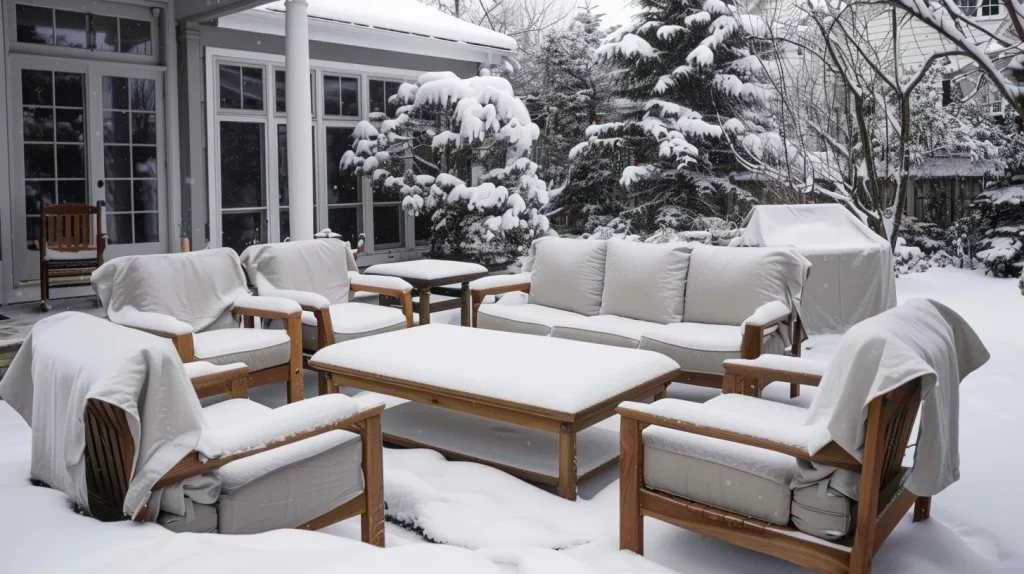
Preparing your patio furniture for winter is crucial for its longevity. Proper winterization protects the materials from harsh weather conditions, preventing damage from rain, snow, ice, and extreme temperatures. This ensures your furniture will look its best and last for years to come.
A well-maintained patio set will not only withstand the rigors of winter but will also be ready to greet spring. Regular care, including proper cleaning and storage, is essential to preserve the aesthetic appeal and structural integrity of your outdoor furniture.
Cleaning Procedures, Outdoor patio furniture covers for winter.
Thorough cleaning is a vital initial step in winterizing patio furniture. This removes dirt, grime, and debris that can cause damage and discoloration over time. Begin by hosing down the furniture, removing loose debris. Then, use a mild detergent solution to tackle stubborn stains. Avoid harsh chemicals that could harm the furniture’s finish. After cleaning, ensure all surfaces are thoroughly rinsed and dried to prevent water damage or mold growth.
Drying and Protecting from the Elements
Drying is paramount to prevent moisture damage. Allow the furniture to air dry completely before storing. Consider using a soft cloth or towel to remove any remaining water droplets. If necessary, a specialized drying agent may be employed. Protecting from further exposure to the elements is crucial. Use a waterproof cover specifically designed for outdoor furniture. The cover should be tightly fitted to prevent water and debris from entering.
Proper Storage Methods
Proper storage extends the lifespan of patio furniture. Store furniture in a dry, sheltered location, away from direct sunlight. Avoid storing furniture in areas prone to moisture or extreme temperature fluctuations. Consider raising the furniture off the ground to improve air circulation and prevent moisture buildup. If possible, store furniture in a garage, shed, or covered patio area.
Recommended Tools and Supplies
For effective winterization, gather the necessary tools and supplies. A garden hose, mild detergent, soft cloths, and a waterproof furniture cover are essential. A drying agent, if required, should also be included. A sturdy ladder or other lifting devices might be needed depending on the size and type of furniture. A protective cover should fit the furniture tightly to prevent moisture from seeping in.
Comparison of Winterization Strategies
| Strategy | Effectiveness | Potential Drawbacks |
|---|---|---|
| Traditional Cover Method | Effective in protecting against rain and snow. Relatively inexpensive. It may | not fully prevent moisture from seeping into porous materials. It may not provide complete protection from extreme temperatures. |
| Enclosed Storage Method | Highly effective in protecting from all elements. Maintains furniture condition. | Requires more space and potentially higher cost. It may be less convenient. |
| Elevated Storage Method | Reduces the risk of moisture damage. Improves air circulation. | Requires additional tools and effort. It may not be feasible for all furniture types. |
Proper winterization significantly extends the lifespan of your patio furniture, preventing costly repairs or replacements.
Final Wrap-Up
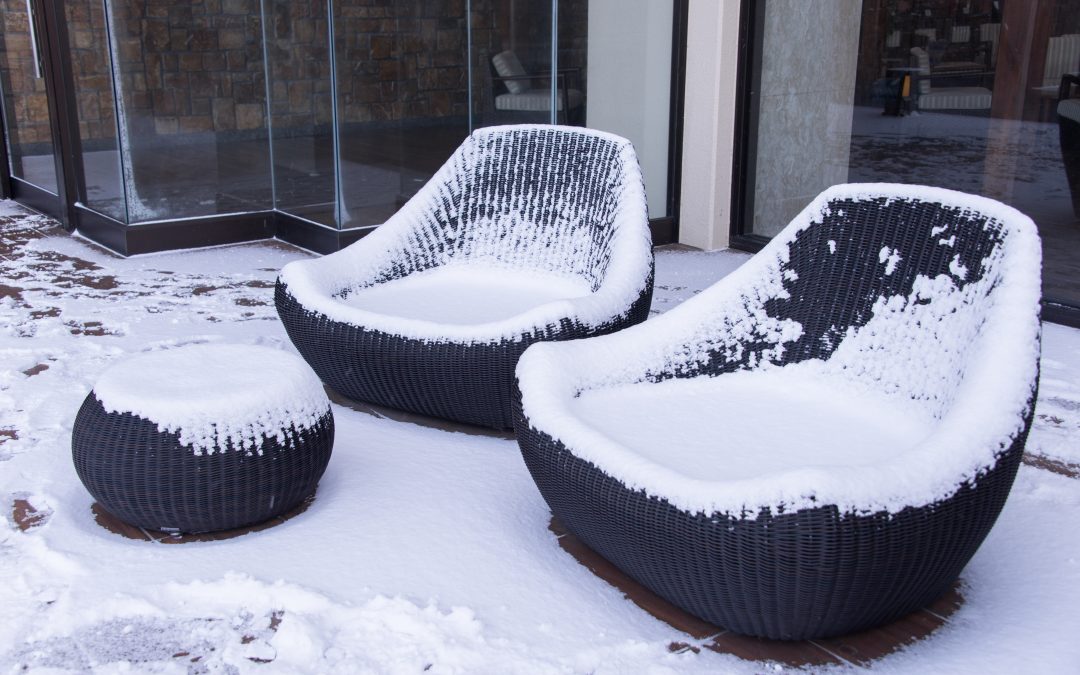
Source: hybridcovers.com
In conclusion, protecting your outdoor patio furniture during winter requires careful consideration of cover types, proper measurement, and effective winterization strategies. By following the recommendations in this guide, you can safeguard your furniture from the elements and ensure it’s ready for spring. A well-maintained patio set will reward you with years of enjoyment, making the investment in covers and winterization procedures worthwhile.

